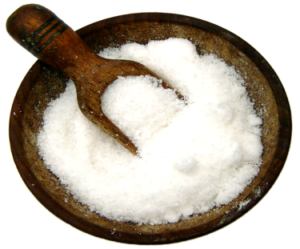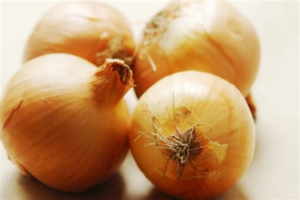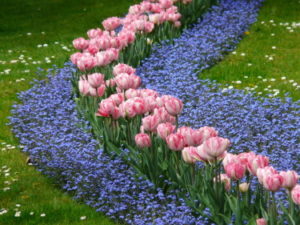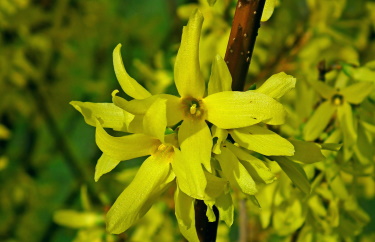
Know everything about the “Forsythia Bushes aka Golden Bell”:
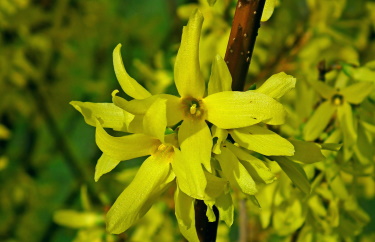

As spring approaches the globe, the gardening fans seem to be cheerful and getting a bit of that gardening fever. And as a matter of fact, they should be, because spring brings all the lost charm and beauty to their gardens and lawns.
It restores the foliage and blossoms that seem to have relinquished in the harsh winter conditions. Spring is like the heart of all seasons, bringing back life to the beauty of the earth.
And to be honest, not only horticulturists and gardeners adore this vivid and colorful season,but every single being with a nature-loving insight love’s when spring is in the air.
All the great and vibrant plants and flowers are in full swing this season. You can start your planting again and wait for your garden to grow in the most flawless and stunning sights.
And you’e too eager to see your garden all bloomed up as soon as possible awaiting some plants that would start thriving in the early spring. The gorgeous yellow bell-shaped beauty — dipped in a hint of golden shimmer, standing tall in the garden with a densified mesh of branches dancing on the tune of wind — is what you’re looking for?
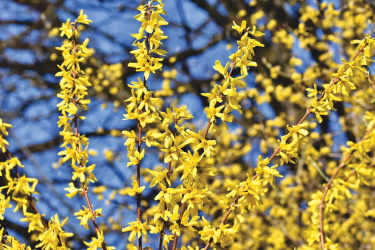

Any hints? Yes! The forsythia bush or what you commonly call as the golden bells. The forsythia bushes add a thousand folds of glamour and drama to your garden.
Grow them as a hedge to create a border around your garden’s entrance or cultivate them as a flowering plant to transform your garden into a chic, sight-worthy view.
Table of Contents
What are the common traits of forsythia or the golden bells?
Forsythia is precisely a genus, which means it has many different species of plants. These plants are more or less flowering plants or specifically shrubs typically ranging in size from 3 feet to 20 feet.
The plant outgrows a very dense network of branches, (which is why it is used as a tough hedge plant) bearing a myriad of yellow-colored, bell-shaped flowers. Forsythia shares the family Oleaceae, which is a famous family embracing the olives plants as a marker.
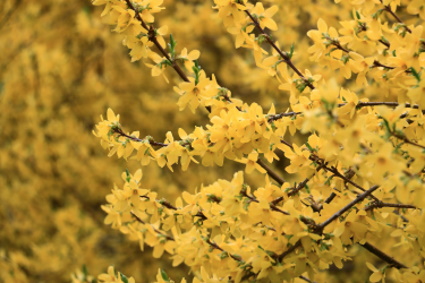

The species of forsythia and their origin:
The forsythia genus has around 11 species of deciduous plants bearing flowers, the most widespread being, Forsythia x intermedia. Most of the species are believed to be originated from Eastern Asia. However, some are also native to Southeastern Europe, while others can be found belonging to China and Japan.
Forsythia holds the common name golden bells, which is quite familiar to the gardeners and common people too; other common names that can relate to forsythia are easter tree and gold tides, etc.
Besides forsythia x intermedia, other varieties of forsythia bushes are Beatrix Farrand, Lynwood gold, northern gold, and golden peeps. These are all types of forsythia that are categorized on the basis of the height of the shrubs.
Fun fact: The genusforsythia got its name after a Scottish botanist, William Forsyth.
What advantages can the forsythia plant provide?
Though the plant is usually used as a lofty decorative item and as a hedge plant to create beautiful and mesmerizing hedge patterns in the garden. Besides the ornamental point of view, the plant possesses some health and medicinal benefits too.
Different parts of the plants like seeds, flowers, leaves, fruits, and barks have different properties and possess various effects.
In fact, to your shock, the plant is in the top 50 medicinal plants according to the Chinese herbal medicine practices. Some of the benefits have been added below.
So the forsythia flower holds antitussive, antipyretic, and febrifuge effects, which makes it an excellent cold, cough, and flu reliever.
The seeds have antibacterial and anti fungal properties.
The flowers and fruits are effective diuretics, emmenagogue, vermifuge and can prove to be extremely helpful in bronchitis and sore throats.
The cosmetic uses are also prevailing, like tons of skin, and hair products are using forsythia as an ingredient to treat dandruff and hair growth issues.
How to care for forsythia bushes?
The shrubs are not very hard to please, just a little effort can make your forsythia oasis a happy go lucky place. Just the right planting location and conditions will make the forsythia grow robustly.
The bush is flexible in terms of location; the site can range from a little shady to full sun. Both will do well, but a slightly warm and sunny place can thrive your forsythia bushes. The soil needs to be well-draining and medium nutrient-containing.
The dense border forsythia bushes are very adjusting and can survive in medium nutrient containing soil. Water requirements are also very minimal. If the plants are growing in the garden, the roots are deep enough and don’t need frequent watering.
Just water once a day or when you see the soil dry enough. And if you’re growing your forsythia in a pot or container, then you need a little extra water for your plant’s adequate development.
For the wild outdoor forsythia bushes, fertilizers are not that necessary. You can use the regular gardening soil in the starting season of planting. In the later years, you can use any organic fertilizer or compost to maintain the healthy growth of the plants.
A quick tip: One thing to look after in caring for your forsythia is pruning, pruning helps the bush to grow properly.
Want some tips for using forsythia as a hedge?
Since the plant is most famous for its use as fencing and hedging bush, there are certain points you should consider while planning to get a forsythia hedge garden.
The soil and water conditions are already discussed earlier; these are pretty much the same for hedges, solitary, or container plants. But as hedges, it needs some additional details to be taken into consideration.
Bring back your forsythia by chopping off the old branches:
After a year or two, your hedges of forsythia will lose their ability to produce new flowers due to overcrowding of the branches and flowers. Chopping off the older branches will combat this issue and will bring your bush’s life back.
Thinning the trunks will go a long way:
No matter if your hedge is in the perfect shape, you need to cut the old and weary branches completely to maintain the plant growth and stimulate the growth of new branches.
Don’t hesitate to cutback the awfully old hedges:
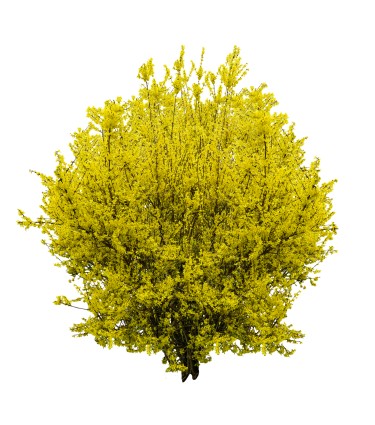

Do you want your forsythia shrub to die after a long non-flowering period? No! Right? So don’t think twice and cut the entire hedge off, leaving a few healthy branches to regenerate your golden bell garden.
When and how is forsythia hedge pruning done?
You can not imagine what pruning can do to your plants. All plants need to get pruned once in a while. In the case of forsythia shrubs, as soon as you spot some irregular outgrowths of branches or you see that your fence is getting out of shape or simply if you spot non-flowering branches. It’s time to get your garden tools and prune the unnecessary leaves, flowers, and branches off.
But once you have spotted any of the signs mentioned above, don’t go immediately for pruning. The best time for pruning is spring, despite the fact that it’s the flowering season the plant can get frost if you carry out the pruning in summer or autumn.
Tip time: A gloomy hazy day with a little sunshine is ideal for pruning.
How to prevent your forsythia from winter damage?
The winter-hardy nature of forsythia is undoubtedly remarkable, but still, it is a plant and needs to be looked after in extremely low temperatures to avoid any freezing of the plant. Planting season plays a vital role in protecting the plant for any possible damage that can occur due to freezing weather.
If you are growing forsythia shrubs in temperate regions where the temperature drops to freezing points, make sure to plant in the spring season. There is a good chance of survival for the shrubs that are planted in spring.
Autumn planted shrubs are more prone to freezing, freezing can be minimized by incorporating mulch. Mulch keeps the temperature from fluctuating and lock the warmth, so your plants don’t get frosted. Besides mulching, you can also cover your hedges with a jute or fiber material shelter to avoid frosting.
Are you waiting for the Tip? Start watering your forsythia in the late fall before the garden bed gets all frozen up. This will latch the water and make it available in the winter season.
How to propagate forsythia shrubs:
Propagation can be done by cutting or layering.
Cutting: Take a few stems of about 6-7 inches in length, and put them deep in a pot containing soil along with a good rooting mixture. Now leave the pot in sunlight for almost 2 to 3 weeks. Once the rooting is started, your forsythia is ready to be planted in the garden.
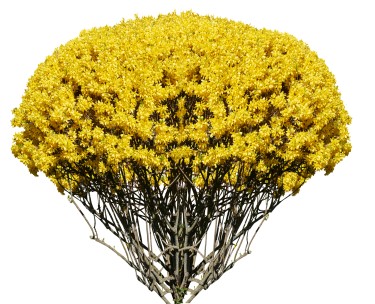

Layering: Take a long stem and, with the help of a wire, make a U shaped loop for the stem in a way that the branch reaches the ground effortlessly. In this position, affix the branch and let it stay in contact with the ground. Cover this junction point with soil and wait for the roots to grow. Once the roots are grown, new shrubs will start to propagate.
Gardening whiz advice: always use multiple stems for rooting, in case one won’t root, the other will.

